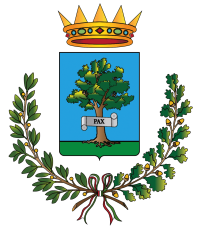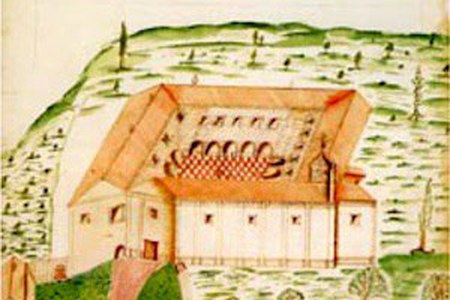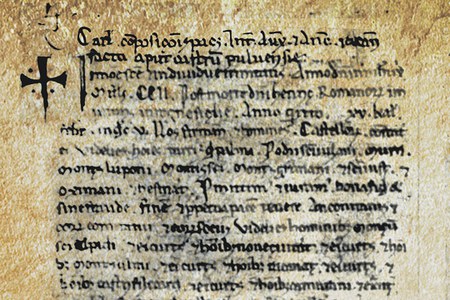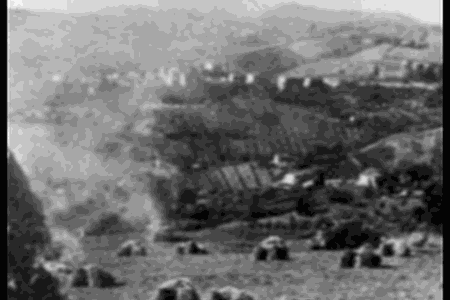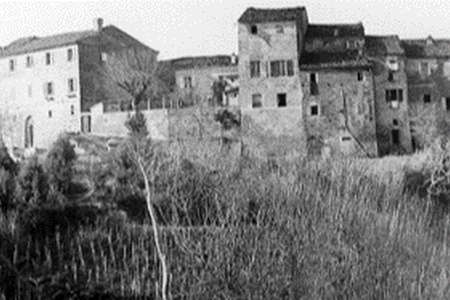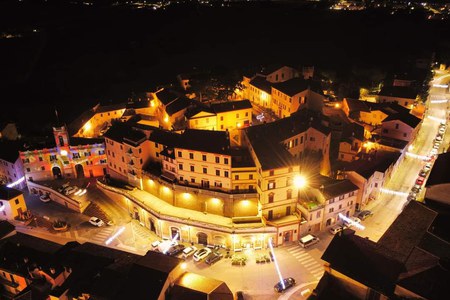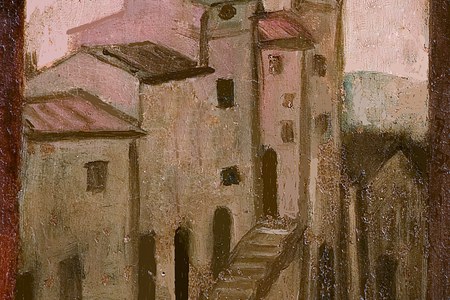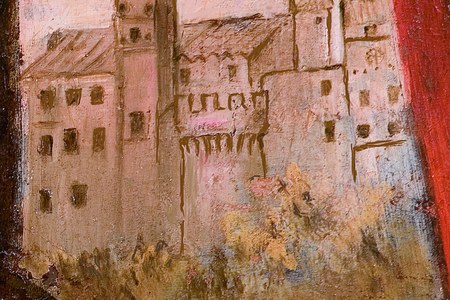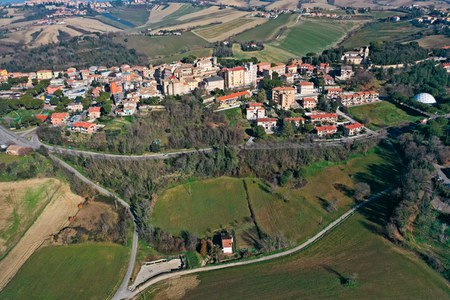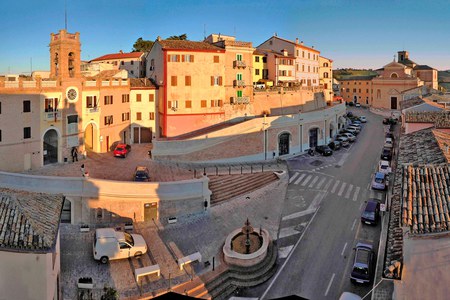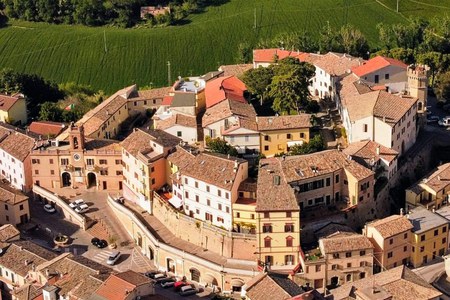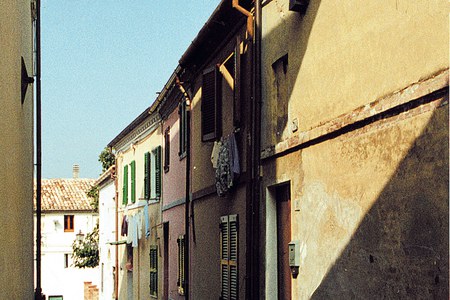Polverigi and its history
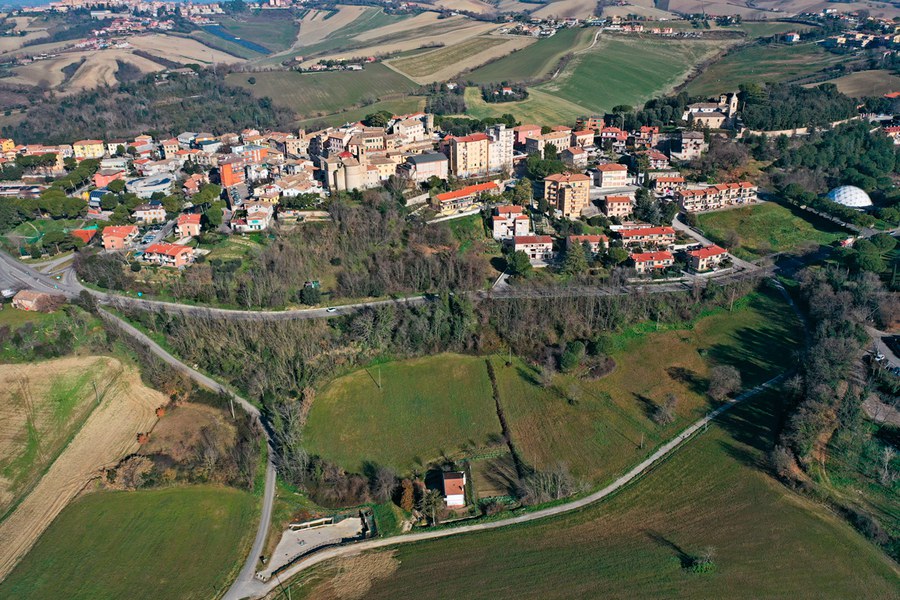
The small town of Polverigi stands on a spur that wedges in a valley east of the Esino River: it is about 22 km far from Ancona, 16 km from Jesi, 12 km from Osimo. The population, including the hamlets, reaches about 4,500. Polverigi developed around the ancient castle, which over the years, has been deprived of what its military nature testified (towers, crenellations, loopholes, etc.), and used for private housing. Only the entrance gate, with its round arch, is left untouched, although inevitably, without the drawbridge and portcullis. In prehistoric times, as archaeologists claim, the territory of Polverigi was uninhabited, covered only with woods and forests. The first settlements date back to the Middle Ages: it is not by chance that the town arose, as mentioned earlier, around the ancient castle, as well as the earliest historical record concerns the existence of a parish church of S. Damian on a hill not far from the present town.
From the Middle Ages to the present day
The first text concerning Polverigi goes back to 1000 -1050 and contains mention of a latifundium of the Church in Ravenna, within which was located the Parish Church of San Damian, on which depended the various rural chapels scattered throughout the territory . After the year 1000 it began an increasingly accelerated process of population of the territory, leading to the cultivation of uncultivated and wooded lands and the spread of human settlement. Thus began the so-called phenomenon of encastellation, that is, the construction of villages protected by walls or palisades, mentioned under the name of Castrum, with functions of defense and governance of the territory. Also the birth of the Castle in Polverigi should be seen in this context and probably occurred in the second half of the 12th century.
The Castle and the Peace of Polverigi
The earliest reliable records of the castle existence date back to 1198 and it's proved by a document in which Polverigi was expected to become part of the Treaty of Confederation between Ancona, Osimo and other Piceno municipalities. By that date, therefore, the castle was already part of Ancona county and under its rule. The castle must have been well-structured as well, if on January 18th, 1202 "Apud castrum Pulverisie" it was concluded a peace treaty - The Peace of Polverigi - involving twenty-seven municipalities in the Marche region, from Pesaro to Fermo, with the aim of putting an end to the territorial struggles among the major municipalities, especially Ancona and its allies against Osimo and Fermo. Polverigi was chosen for the treaty because of its strategic location along an important connecting route, barycentric between Ancona, Osimo and Jesi, but also because of its special legal status, partly under Ancona, which had been the main protagonist of that peace, and partly under the Church. In 1214, the Marquis Aldobrandino d'Este, who ruled the Border District in those years, also stopped in Polverigi, thus confirming the importance of the road route crossing the town. In 1253 Innocent IV assigned the property rights he still had over the castle to the bishop of Ancona. Actually, the rule of the castle now belonged to Ancona, whereas the government of economic affairs was entrusted to the local community and to its institutional bodies . By the end of the 1200s, the castle of Polverigi had reached the size and shape that still characterize the old historic core. It was oval in shape, surrounded by crenellated walls and equipped with a patrol walkway and a watch tower. Its gate had a drawbridge and inside there were modest dwellings, with small shops on the ground floor and rooms on the second floor. Still today, in the basements of nearly all the houses, there are caves dug out of the tuff well preserved and maintained and still solid: they have almost always been made during the construction of the building and used in peacetime as storehouses for grain, wine and oil, whereas during sieges they served as a reserve for food and water and as an escape route.
The country between Guelphs and Ghibellines
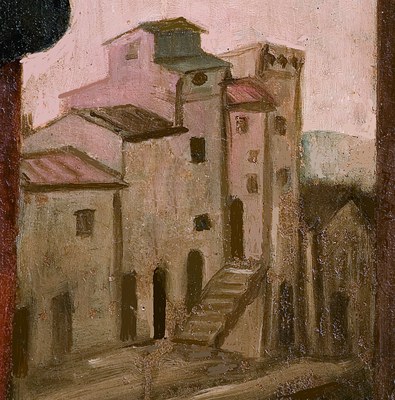 In the 14th century, the castle of Polverigi was repeatedly subjected to aggression during the wars between the Guelphs and the Ghibellines, such as in 1323, when it was sacked by the Ghibellines led by Lippaccio. Particularly critical was the situation towards the end of the 1300s, because of the raging of mercenary militias in its territory: between 1389 and 1390 the inhabitants were forced to demolish the buildings of St. Augustine's monastery in order to use the material to repair part of the walls in a serious state of ruin. In May 1392 the castle suffered an extensive damage from Broglio di Tridino's militia. After being dismissed by Giangaleazzo Visconti they had infested Tuscany, Umbria and the Marche, whereas in 1394 there was a clash between the militia of Ancona and those ones of Captain Milano d'Asti's. The effects of this uninterrupted state of war, insecurity and food shortages were severely felt and caused a partial depopulation of the castle.
In the 14th century, the castle of Polverigi was repeatedly subjected to aggression during the wars between the Guelphs and the Ghibellines, such as in 1323, when it was sacked by the Ghibellines led by Lippaccio. Particularly critical was the situation towards the end of the 1300s, because of the raging of mercenary militias in its territory: between 1389 and 1390 the inhabitants were forced to demolish the buildings of St. Augustine's monastery in order to use the material to repair part of the walls in a serious state of ruin. In May 1392 the castle suffered an extensive damage from Broglio di Tridino's militia. After being dismissed by Giangaleazzo Visconti they had infested Tuscany, Umbria and the Marche, whereas in 1394 there was a clash between the militia of Ancona and those ones of Captain Milano d'Asti's. The effects of this uninterrupted state of war, insecurity and food shortages were severely felt and caused a partial depopulation of the castle. 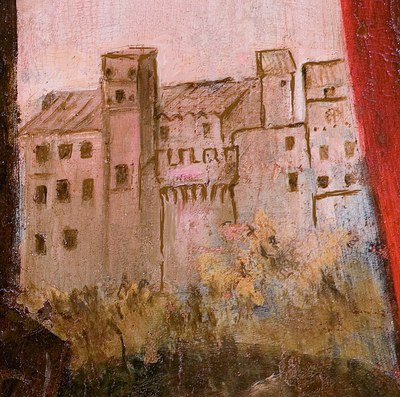 During the 1400s a process of population growth restarted throughout Italy, so the castle was enlarged and provided with a fortified gate with a public palace above, now the Town Hall. In one wing of the castle it was built a small church dedicated to the Holy Crucifix : its existence in the second part of the 1400s is evidenced by the recently recovered fresco of the Crucifixion.
During the 1400s a process of population growth restarted throughout Italy, so the castle was enlarged and provided with a fortified gate with a public palace above, now the Town Hall. In one wing of the castle it was built a small church dedicated to the Holy Crucifix : its existence in the second part of the 1400s is evidenced by the recently recovered fresco of the Crucifixion.
Toward administrative autonomy
In the early 16th century the power of the Church began to organize and strengthen itself to create a more centralized state order, so it began a long period of stability and internal peace, in which the role of the castle lost its importance. A final phase of violence occurred in 1517, when the castle was occupied by the militia of Francesco Maria I della Rovere, Duke of Urbino, who on March 15th thwarted the attempt of papal troops to conquer Agugliano and Polverigi . With the annexation of the city of Ancona to the Papal State in 1532, for Polverigi began a long period of subjugation and struggle against the abuses of the Doric city, from which, for a long time but without success , they had tried to escape. Under Ancona's control, much of Polverigi's agricultural land fell into the hands of city owners, who often left it abandoned or used for grazing. Exploitation of the agricultural territories continued throughout the 1600s, and around the middle of the century it gave rise, moreover, to a meddling in the social and political life of the castles. At the end of the 18th century, the Napoleonic cyclone burst on the scene in the area of Ancona, dismantling the temporal power of the Church with decisive methods and supporting the establishment of the democratic organizations of the Cispadane Republic. Upon the arrival of the French in 1797 and with the appointment of Emanuele Nappi as Mayor, Polverigi was granted an initial form of self-government, which was reaffirmed in 1808 with a final administrative autonomy and the election of Mayor Lattanzio Giamagli. The administration contributed to the establishment of land registries and censuses, documentary archives that allow us today to reconstruct much of Polverigi's history in those years. Another turbulent moment was during the Roman Republic of 1849, when the town pharmacist was arrested, accused of trying to poison the entire Austrian garrison in Ancona by altering a supply of flour. During these years, the Nappi family purchased the Monastery of St. Augustine, which had been suppressed during the Napoleonic period, they demolished it and replaced it with a summer residence Villa with a park, now owned by the municipality (Villa Nappi).
The Unification of Italy and the development of the country
After the Unification of Italy, it began a slow social and economic development which also saw the establishment of the first civil and social institutions. In fact, between 1867 and 1870 the village cemetery was moved and enlarged, and between 1885 and 1890 it was built the first aqueduct to bring water to the square. In 1904, following heavy rains, the curtain walls above the square collapsed and they would be rebuilt only a decade later. At that time the appointment of Bishop Ragnini as parish priest gave a jolt to the asphyxiating local political life, and Polverigi developed greatly from a social point of view, with the birth of political parties and trade unions and the founding of numerous institutions, such as the Rural Bank, the Agricultural Cooperative, the Hospital, the Musical Band, the Theater, the Kindergarten, the Municipal Electric Company and others, many of which are still active today.
From World War I to the present
 To World War I, Polverigi paid the tribute of 56 of its sons, but an even greater price was paid in the last dramatic conflict when, in addition to the fighters' fate during the long years of war, the town came to find itself directly on the front line and was involved in the bombings between the opposing artillery and for days it was the scene of real battles. In fact, these territories became the central place of the so-called Battle of Ancona, also fought among these hills between July 17 and 18, 1944, which invested the town of Rustico and led to the liberation of Polverigi from Nazi-Fascist occupation, paying for it, however, with the lives of 25 civilian victims. In the early postwar years the town continued in its agricultural vocation,it was little touched by the economic miracle, and until 1973 saw its population gradually decrease because due to emigration because of lack of work. In the following years, however, the activism of the municipal administrators and the industriousness of the citizens fostered the establishment of the first industries, the increase in population and the development of the town, which today has almost 5,000 inhabitants. Polverigi has thus managed to expand its fame far beyond its borders, thanks to the cultural, social, historical, gastronomic and sporting richness, evidenced by the a lot of initiatives implemented by the many voluntary associations in the area.
To World War I, Polverigi paid the tribute of 56 of its sons, but an even greater price was paid in the last dramatic conflict when, in addition to the fighters' fate during the long years of war, the town came to find itself directly on the front line and was involved in the bombings between the opposing artillery and for days it was the scene of real battles. In fact, these territories became the central place of the so-called Battle of Ancona, also fought among these hills between July 17 and 18, 1944, which invested the town of Rustico and led to the liberation of Polverigi from Nazi-Fascist occupation, paying for it, however, with the lives of 25 civilian victims. In the early postwar years the town continued in its agricultural vocation,it was little touched by the economic miracle, and until 1973 saw its population gradually decrease because due to emigration because of lack of work. In the following years, however, the activism of the municipal administrators and the industriousness of the citizens fostered the establishment of the first industries, the increase in population and the development of the town, which today has almost 5,000 inhabitants. Polverigi has thus managed to expand its fame far beyond its borders, thanks to the cultural, social, historical, gastronomic and sporting richness, evidenced by the a lot of initiatives implemented by the many voluntary associations in the area.
